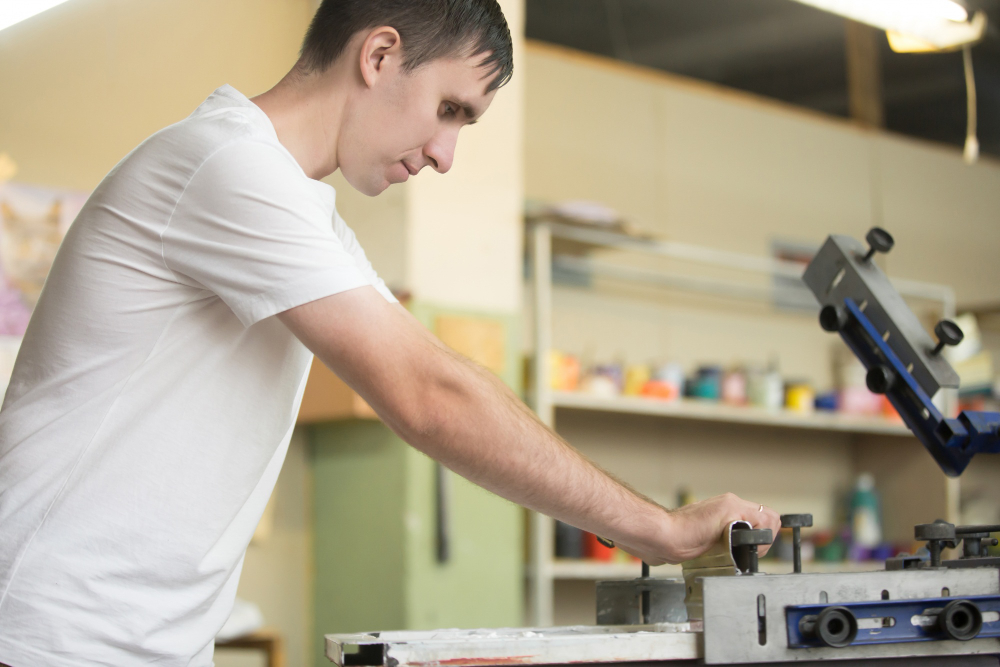When it comes to custom apparel printing, there are several methods to choose from — each with its own strengths and limitations. The three most popular options today are DTF (Direct to Film), DTG (Direct to Garment), and screen printing. But how do you decide which is best for your business?
Whether you’re a small brand just getting started, a print-on-demand entrepreneur, or a local shop looking to scale production, understanding the differences can help you make the right decision.
In this comprehensive guide from DTF Center, we’ll compare DTF vs. DTG vs. Screen Printing to help you determine which method fits your business needs. We’ll cover everything from materials and cost to quality, versatility, and scalability — and explain why many businesses are now choosing DTF transfers as their go-to solution.
What Is DTF Printing?
DTF (Direct to Film) printing is a modern method that involves printing your design onto a PET film, applying a special adhesive powder, and then heat pressing the transfer onto fabric.
Key Features:
- Can be used on cotton, polyester, blends, nylon, and more
- No pre-treatment required
- Vibrant, detailed full-color prints
- Perfect for small batches, custom orders, and on-demand production
At DTF Center, we offer high-quality DTF transfers and supplies designed for both beginners and professionals looking to produce long-lasting, vivid prints with ease.
What Is DTG Printing?
DTG (Direct to Garment) is a digital printing process that sprays ink directly onto the fabric, much like an inkjet printer. It’s best suited for cotton-based garments and usually requires pre-treatment before printing.
Key Features:
- Great for photographic or complex designs
- Soft, high-resolution prints
- Best for 100% cotton garments
- Requires expensive equipment and regular maintenance
DTG is ideal for short runs and detailed graphics but is limited by fabric type and production cost.
What is screen printing?
Screen printing is the traditional method where ink is pushed through mesh screens onto fabric. It requires a separate screen for each color and involves setup time and cleanup.
Key Features:
- Best for bulk production
- Durable prints, especially for simple designs
- High setup cost, but low cost per unit at scale
- Limited design complexity and color blending
Screen printing remains a go-to for large orders with basic designs, like uniforms or event t-shirts.
Comparison Chart: DTF vs. DTG vs. Screen Printing
| Feature | DTF Printing | DTG Printing | Screen Printing |
| Fabric Compatibility | Cotton, polyester, blends, more | Mostly cotton | Cotton, blends |
| Setup Time | Minimal | Minimal | High |
| Design Complexity | Full color, high detail | High detail | Limited with multiple colors |
| Order Size Suitability | Small to medium | Small to medium | Medium to large |
| Cost for Small Orders | Low | Moderate | High |
| Wash Durability | Excellent | Good | Excellent |
| Equipment Investment | Low to moderate | High | High |
| Production Speed | Fast | Moderate | Fast for large runs |
| Pre-treatment Needed | No | Yes | No |
Pros & Cons of Each Printing Method
DTF Printing: The Modern, Flexible Choice
Pros:
- Works on almost any fabric
- No pre-treatment or weeding
- Ideal for small batches and detailed designs
- Perfect for on-demand and DIY production
- Easy to store and apply DTF transfers later
Cons:
- Requires adhesive powder curing
- Slightly less soft hand-feel than DTG on some fabrics
Best for: Small businesses, online sellers, print-on-demand models, startups, and creatives looking for maximum versatility.
DTG Printing: Great for Detailed, Cotton-Based Prints
Pros:
- High-resolution, full-color prints
- Smooth, soft feel on cotton
- Good for one-off or custom designs
Cons:
- Limited to cotton or cotton-rich fabrics
- Requires pre-treatment and maintenance
- Slower for high-volume jobs
Best for: Artists, designers, and shops focusing on premium cotton apparel.
Screen Printing: Ideal for High-Volume Simplicity
Pros:
- Low cost per unit on large orders
- Durable, bold prints
- Great for bulk uniform or merch production
Cons:
- Not ideal for small orders or complex designs
- Lengthy setup and cleanup
- Each color adds time and cost
Best for: Large orders with simple logos or limited color designs, such as schools, sports teams, and corporate apparel.
Why more businesses are switching to DTF Transfers
With the rise of customization, limited-edition drops, and micro-brands, flexibility and speed have become essential. That’s why so many businesses — from local print shops to online clothing brands — are switching to DTF transfers.
At DTF Center, we empower businesses to print what they need, when they need it. With ready-to-press DTF transfers, you can order in bulk and apply them on demand — without worrying about ink, screens, or fabric limitations.
Whether you’re fulfilling orders for your Etsy shop, outfitting your team with branded gear, or launching a new product line, DTF Center makes it simple, cost-effective, and reliable.
Which method should you choose?
- Choose DTF printing if you want maximum versatility, low setup cost, and on-demand capabilities.
- Choose DTG if you’re focused on cotton products with photorealistic details.
- Choose screen printing if you’re producing large volumes of simple, bold designs.
In the world of custom apparel, no one-size-fits-all solution exists. Your choice depends on your business model, design goals, and budget. But if you’re looking for the perfect balance of quality, speed, affordability, and flexibility — DTF printing is likely your best bet.
Explore our full range of DTF transfers, printers, and supplies at DTF Center and discover why thousands of businesses across the U.S. trust us to deliver quality results with every press
